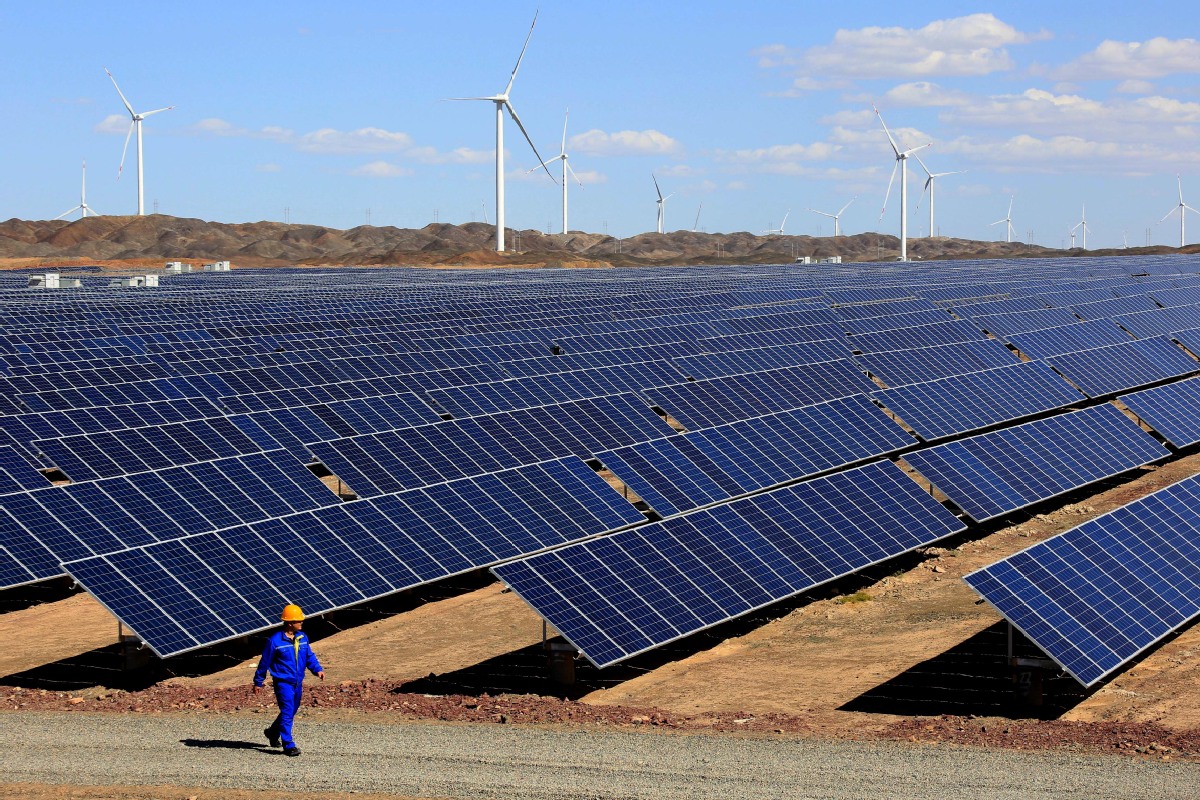Energy SOEs push ongoing carbon neutrality campaign


Offshore oil and gas behemoth CNOOC launches project to boost green drive
China's State-owned oil majors are expected to play a pivotal role in the country's goal of hitting peak carbon dioxide emissions by 2030 and achieving carbon neutrality by 2060 through continued efforts to develop renewable projects, according to industry experts and officials.
State-owned energy producers, including China National Petroleum Corp, China Petroleum &Chemical Corp and China National Offshore Oil Corp, have outlined initiatives and announced their individual timelines for achieving carbon neutrality and increasing their clean energy-installed power capacity.
"State-owned companies play a key role in supporting China's new national climate pledge, and China is expected to become the largest global corporate green power market and a global leader in manufacturing energy efficiency, a circular economy and low-carbon logistics," said Li Ting, managing director and chief representative of the China program at the Rocky Mountain Institute, a clean energy think tank based in the United States.
"Greening China's industry sector through corporate carbon-neutral actions and a green supply chain would support China in transforming from the world's factory to the world's green factory," Li said.
Offshore oil and gas behemoth CNOOC recently launched a carbon neutrality project to comprehensively promote the company's transformation to green and low-carbon development, focusing on improving the supply capacity of natural gas resources, accelerating the development of new energy industries and promoting clean and low-carbon energy in at least 60 percent of the energy mix during the 2021-25 period.
Having set up a specialized research institution, including several departments, to launch the design, study and formulation of the company's carbon emissions reduction road map and carbon-neutrality project, CNOOC said it will actively involve itself in the establishment of a carbon credit trading market and focus on improving the company's carbon property management capacity.
CNPC, the country's largest oil and gas producer by annual output, also vows to further invest in natural gas exploitation and exploration toward a green and low-carbon path. It aims to lift its share of natural gas production to account for 55 percent of the company's primary energy production by 2030 and achieve carbon neutrality by 2060.
China Petroleum & Chemical Corp, better known as Sinopec, Asia's biggest refiner, also recently announced it would lift the share of its non-fossil fuels to drastically reduce the intensity of carbon dioxide emissions. It will also come up with pilot projects for carbon capture use and storage, or CCUS, in line with the government's pledge to make the country carbon neutral by 2060.
It plans to spend up to $1.5 billion annually by 2025, more than a fivefold increase from current levels, on a mix of gas power generation, geothermal, wind, solar and hydrogen projects.
The new targets set by the country's SOEs are a major step forward and illustrate the strong determination of the energy giant. Insiders believe China's ambitious target of carbon neutrality has redefined the direction of the country's sustainable development, and the actions and innovations of its State-owned companies can be role models for cutting emissions, even on the global stage.
However, Liu Manping, an expert at the China Oil and Gas Industry Think Tank Alliance, believes the shift toward a significant contribution to the ambitious goal of global carbon neutrality is not without obstacles, and the country should drastically cut coal consumption, reflect on future transitions and find opportunities amid the changes.
Coal still ranks high on China's energy consumption source list. China's coal consumption accounted for 57.7 percent of the total energy mix in 2019. While it was down from 59.2 percent a year earlier, it was still way above the global average of 30 percent.
"It's necessary to gradually wean ourselves off our high dependence on coal and further lower coal's share in China's energy mix to achieve the target of carbon neutrality," Liu said.
According to Liu, the goal still remains a challenge for China, which relies heavily for its electricity on coal-one of the most carbon-intensive fossil fuels. As the country is still undergoing industrial development, energy consumption and carbon emissions will still be on the rise, and achieving carbon neutrality, or releasing no additional carbon dioxide into the atmosphere, will be challenging.
Liu said that to achieve carbon neutrality by 2060, the country should further invest in renewable energy power generation and advanced energy storage modalities.
Insiders said that with carbon neutrality being on the agenda, energy majors worldwide are pushing forward individual plans. Compared with Western peers who focus more on developing solar, wind, hydrogen and carbon capture and storage, Chinese energy giants are attaching more significance to clean, low-carbon natural gas.
Luo Zuoxian, head of the intelligence research department of the Sinopec Economics and Development Research Institute, said in order to achieve the 2060 target, China's oil majors are all attaching significance to developing natural gas.
All three oil majors are stepping up efforts in the production, supply, storage and marketing business chain construction of natural gas in the current phase, as the primary energy consumption and the proportion of coal in primary energy all remain high in China, Luo said.
Carbon neutrality means achieving a balance between emitting carbon and absorbing carbon from the atmosphere in carbon sinks. In order to achieve net-zero emissions, all worldwide greenhouse gas emissions will have to be counterbalanced by carbon sequestration, or removing gaseous carbon from the atmosphere and then storing it.
Li Ziyue, an analyst with BloombergNEF, said natural gas will play an increasingly important role in the decarbonization process, and the announcement by the oil majors will help prepare them for China's future of net-zero emissions.
Natural gas demand is expected to set a record in 2021 with the government on track to meet its long-term environmental protection targets, according to forecasts released by several agencies.
While S&P Global Platts Analytics forecasts China's natural gas demand is expected to set a record, reaching 360 billion cubic meters in 2021 and up 8.4 percent from last year, the Economics and Development Research Institute under Sinopec believes China's gas demand will rise between 6 percent and 8 percent to around 340 billion cu m or 345 billion cu m this year.
The institute believes China's average annual increase in natural gas demand is expected to exceed 20 billion cu m during the 2021-25 period and reach 430 billion cu m in 2025.
In addition to natural gas, oil majors in the country have also been stepping up forays into other greener fuel sectors in recent years, further investing in energy-saving and environmental protection technology and lifting the proportion of clean energy including solar power, wind power, hydrogen, geothermal and biomass energy.
CNPC has carried out pilot projects in geothermal and biofuels in recent years. It has also set up a hydrogen joint venture with Shanghai's Shenergy Group with a 40 percent stake.
Sinopec focuses more on the hydrogen sector. It plans to build several hydrogen highway corridors along China's seacoasts by developing hydrogen refueling stations alongside its 30,000-strong petrol stations. Being China's leading shale gas developer, Sinopec also aims to nearly double its output of the unconventional fuel to 13 billion cu m by 2025, in alignment with Sinopec Group's vision of "building a world-leading clean energy and chemical company".
CNOOC also revived activities in offshore wind power in 2019 after closing its renewable unit in 2014, planning to spend 3 percent to 5 percent of its annual budget on the sector. Its first 300-megawatt wind power plant off Jiangsu province has been connected to the grid and began generating power in September, and it also has planned other projects off Guangdong and Shandong provinces.




































